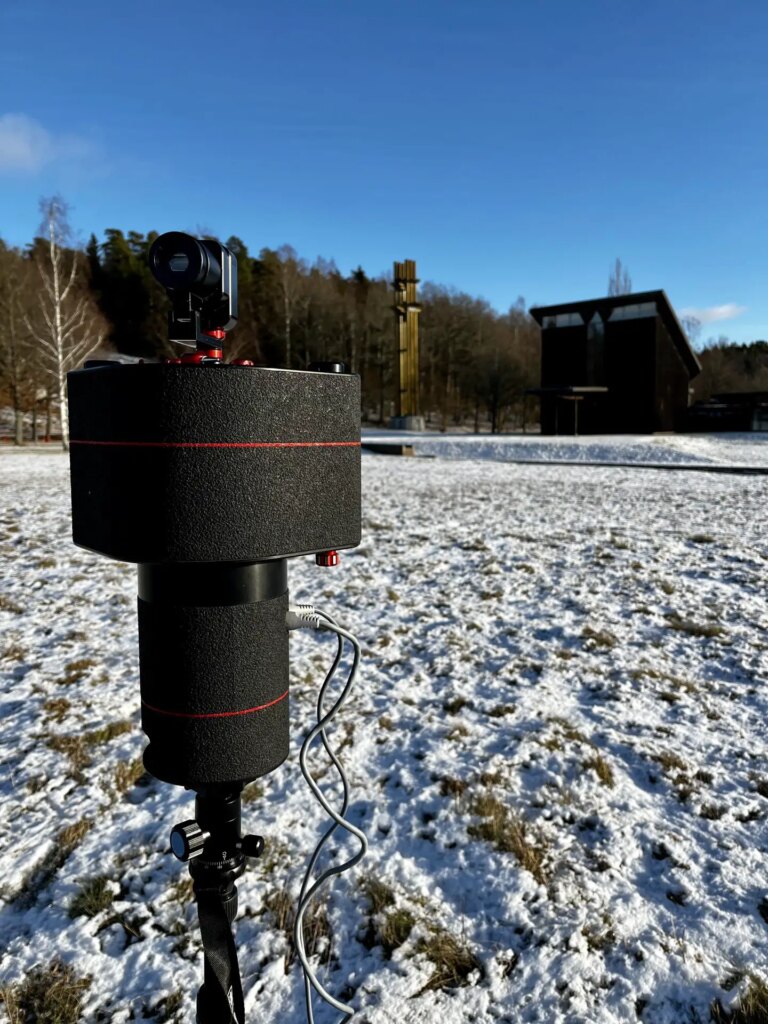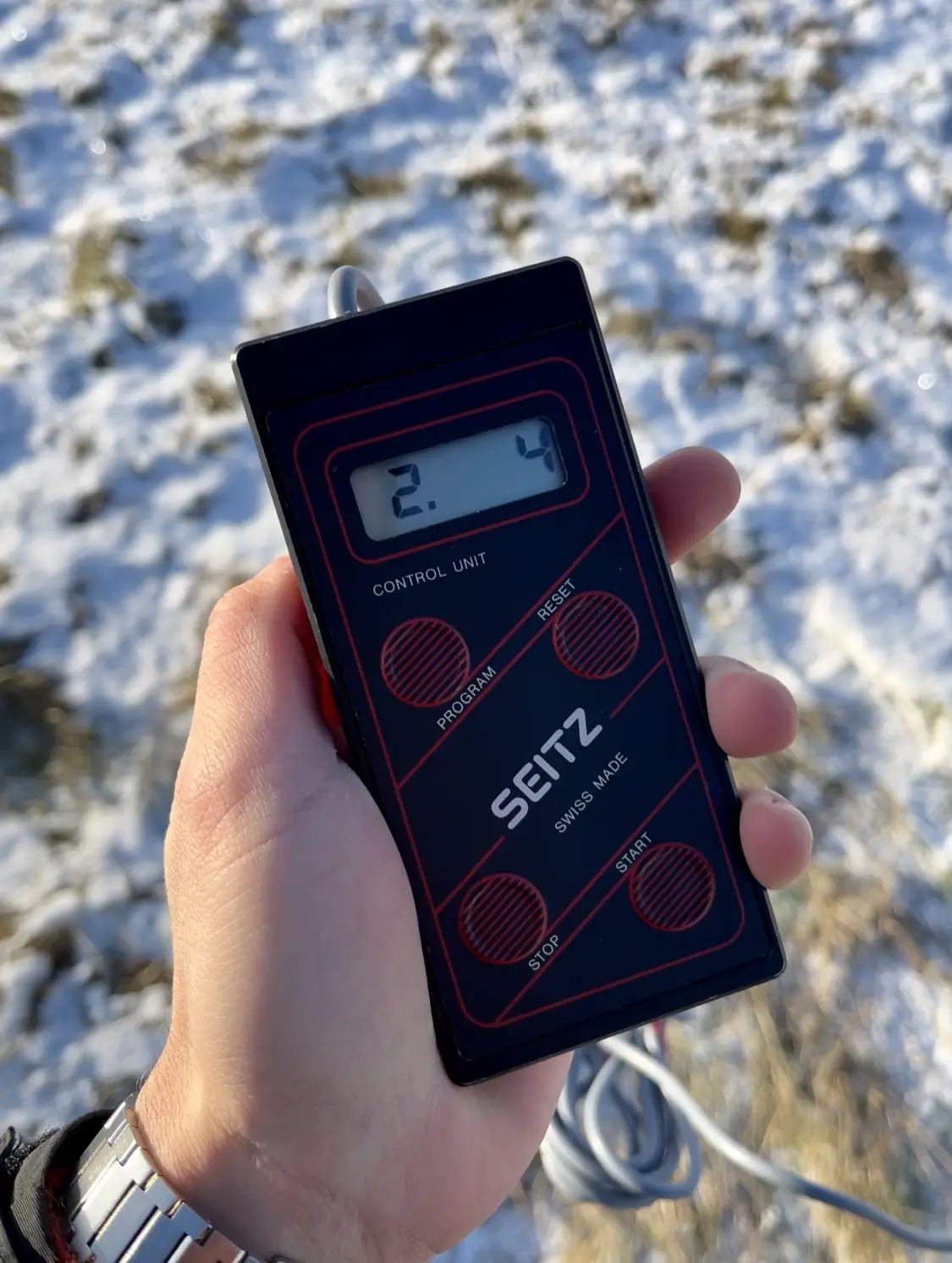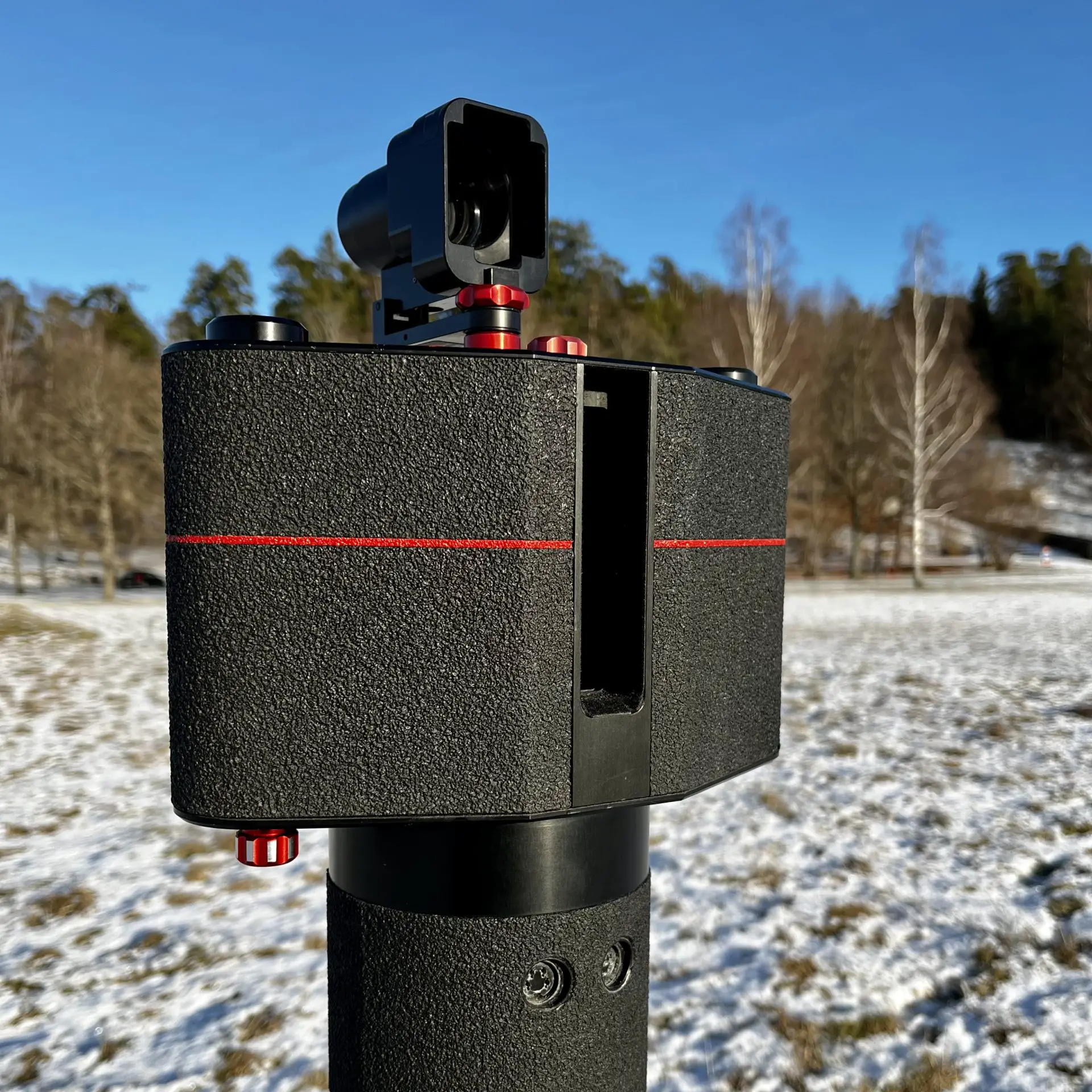Last time I wrote about my pilgrimage to Santiago de Compostela, which I documented on medium format with my Hasselblad 500 CM. What I didn’t mention was how that trip made me cross paths with the hefty Roundshot 65/70-220.
The Busses
After Santiago de Compostela I spent a few days in Portugal where my 500 CM showed signs that it apparently hadn’t liked the trekking: one of the lens blades broke, leaving me without a reliable camera to document my trip through Porto but also through the next towns of Guimarães and Braga. It is in the second of these cities that I randomly logged in into Facebook and decided to check Marketplace to see what was being sold in the surroundings. After scrolling a little bit and finding nothing, I decided to increase the radius of the search and in a stroke of luck I found for sale something that resembled some sort of camera: the Roundshot 65/70-220. Nonetheless there were two problems with it. First, the seller didn’t know if the camera was in working condition, he had just gotten it as part of a deal and wanted to get his money back. Second, the camera was located back in Porto and I (in Guimarães) was supposed to be leaving within the next 3 hours.
I decided to take a leap of faith and texted the seller, in a matter of few messages we agreed to meet at the bus station in Porto and I was immediately on my way trying to catch the next departing bus. If executed properly I could be back in around 2 hours and continue to my next destination.
As you can guess, the plan was a success. Three buses later I was now in Braga testing the Roundshot in the Airbnb room. I might have “lost” (briefly) the use of my Hasselblad 500 CM but I discovered a new camera that become a unique addition to my collection.

The Solid Block of Aluminium
Now, what is it with this camera and what makes it so special?
The Roundshot 65/70-220 is a medium-format-panoramic camera that was produced in 1984 by the Swiss company Seitz, which (to this day) specializes in the niche and high-end manufacture of panoramic cameras. The camera was mounted with a Rodenstock 65mm lens (hence the “65” in the name) capable of producing 360 panoramic photos on 70mm or 120/220 film (hence the “70-220”) .
It’s immediately noticeable that no expenses were cut in the production of these robust cameras, the built is heavy but solid. Taking a small dive into the official website the reason becomes clear:“(…) every piece of a Seitz Roundshot camera is carved from a solid block of aluminium using highly precise CNC machinery”. In the case of the 65/70-220 this equals 7kg worth of camera only, to which one must add the weight of the 80’s-sized battery pack and its charger, the custom made viewfinder and the wired remote controller (both of which are also made out of solid aluminium).
This is not a point and shoot
So how does one use this piece of Swiss manufacture?
After loading the film and setting up the tripod one must ensure that the camera is properly leveled which is not always an easy task. With the battery pack and remote connected to the body next is adjusting the focus and aperture with the help of the knobs that are located on top. Lastly, the exposure time can be adjusted with a huge gear that is discretely located on the bottom of the body. Buyer beware, this is just half of the required steps before taking a photo.

The last steps must be done on the remote controller, which serves both as a frame counter and as the shutter trigger: the LCD indicates the amount of /frames/ (or rather said, “units” of degrees) that the camera will shoot and also keeps score of how many have been shoot.
Clicking on “PROGRAM” will adjust the amount of rotation for the photo for which every unit added the camera will rotate ~90 degrees . When using 120 film one can get up to two full 360 panoramas if no spacing is added between them but it’s important to mention that there will be a fine overlapping between the two panoramas.
The remaining buttons are self explanatory, where “START” makes the rotation begin, “STOP” halts manually the movement (if needed) and “RESET” cleans any info located in the LCD including the amount of photos taken.
The One Long Frame
While the process of using the Roundshot 65/70-220 may seem complicated, it is worth the effort. Its process and use can be compared to the one of shooting with great format camera, everything (from the set up to the photo) demands to be approached calmly. It shows that the camera was intended for landscapes and not for quick shooting like in a street setting.

Personally, I ruined 4 rolls of film before getting the hang of the camera but when done right the results are beautiful. The Roundshot 65/70-220 produces beautiful panoramic negatives that are almost magical to behold, there’s something to having a whole long and continuous frame in medium format that makes this camera a unique and valuable addition to any photographer’s collection, if you can find one.
This story couldn’t have come to fruition without the help of Urs K. and the technicians at Seitz Phototechnik which patiently guided me through when I was getting familiar with the camera.
You can find me on Instagram, where I (slowly) upload photos from my trips.
Daniel M.
Share this post:









Comments
Arthur Gottschalk on Roundshot Seitz 65/70-220 – One (Long!) Frame
Comment posted: 28/06/2023
Comment posted: 28/06/2023
Comment posted: 28/06/2023
Comment posted: 28/06/2023
Castelli Daniel on Roundshot Seitz 65/70-220 – One (Long!) Frame
Comment posted: 29/06/2023
Comment posted: 29/06/2023
Daniel Morales on Roundshot Seitz 65/70-220 – One (Long!) Frame
Comment posted: 06/07/2023